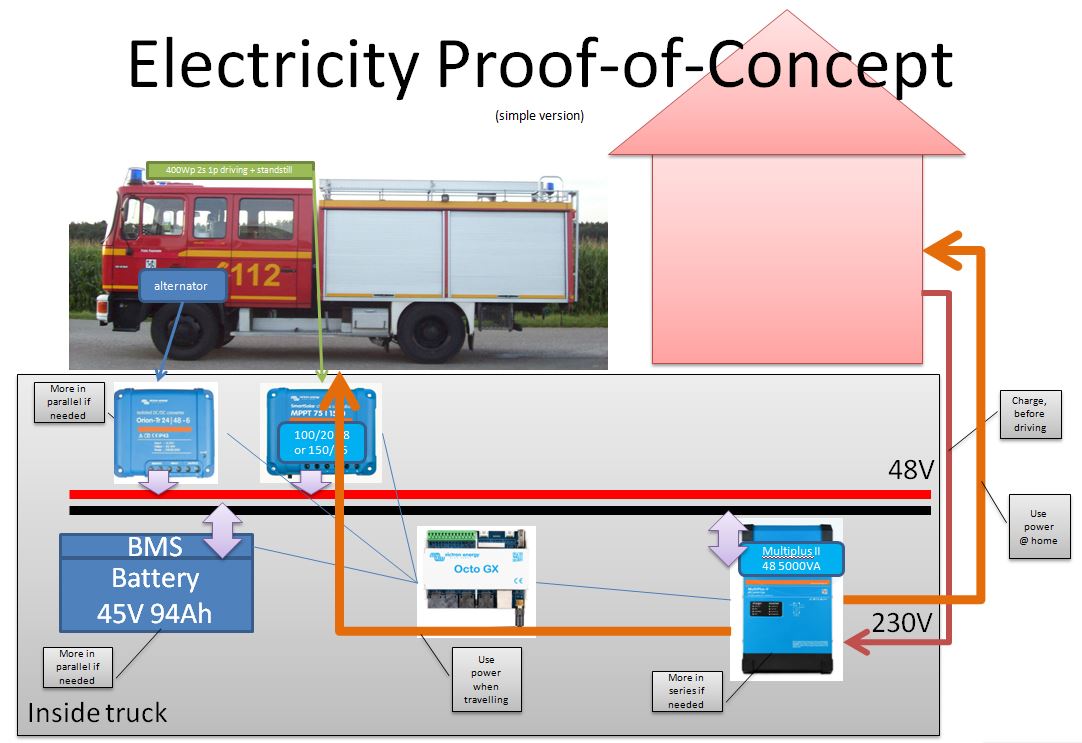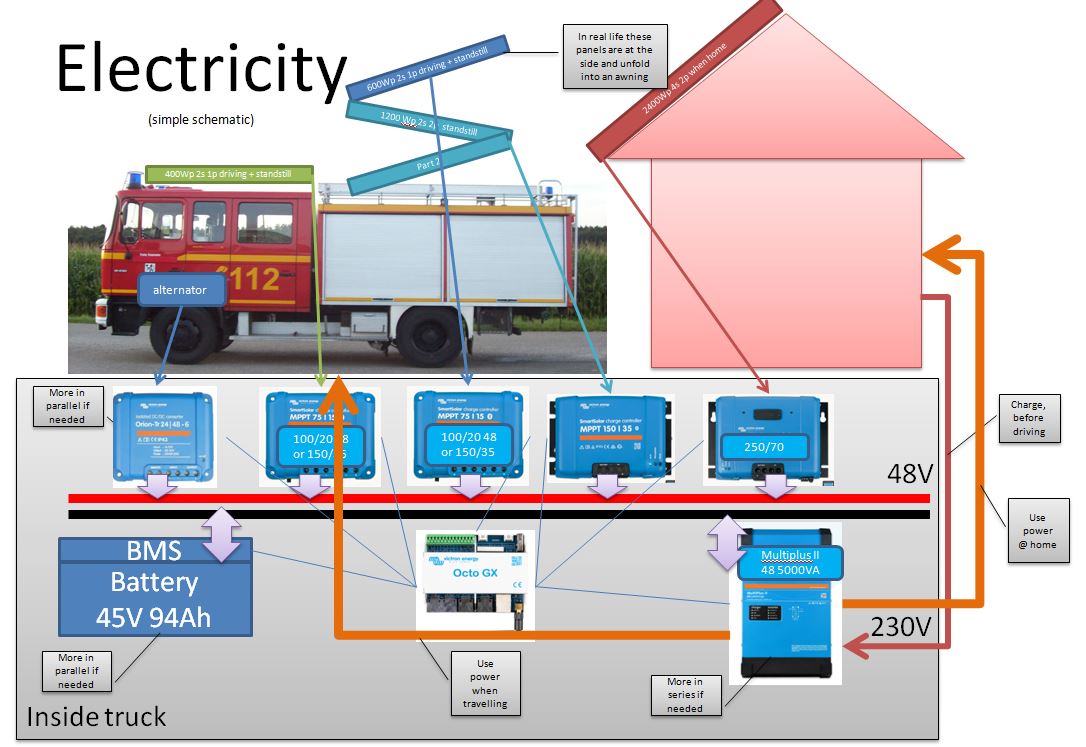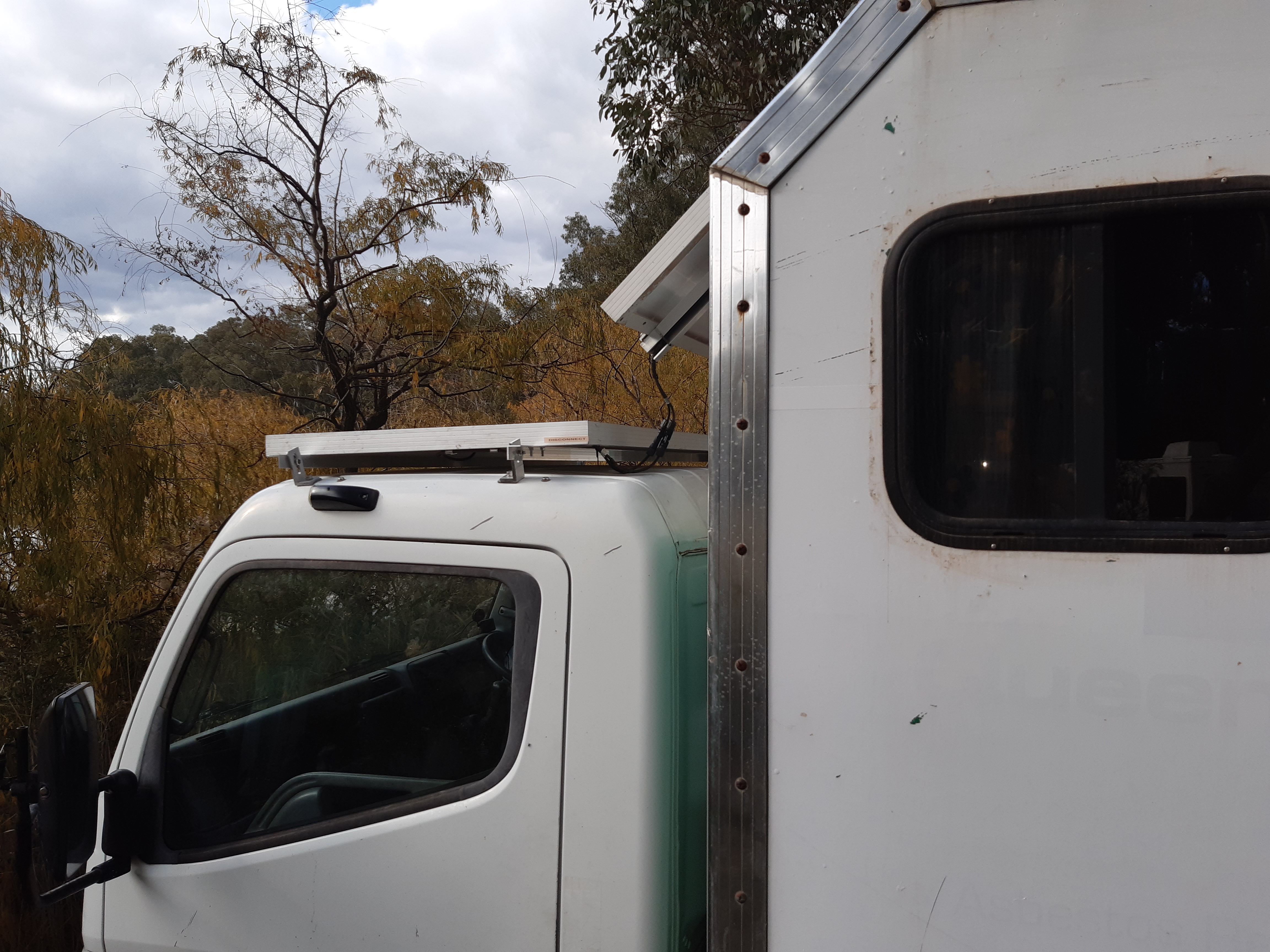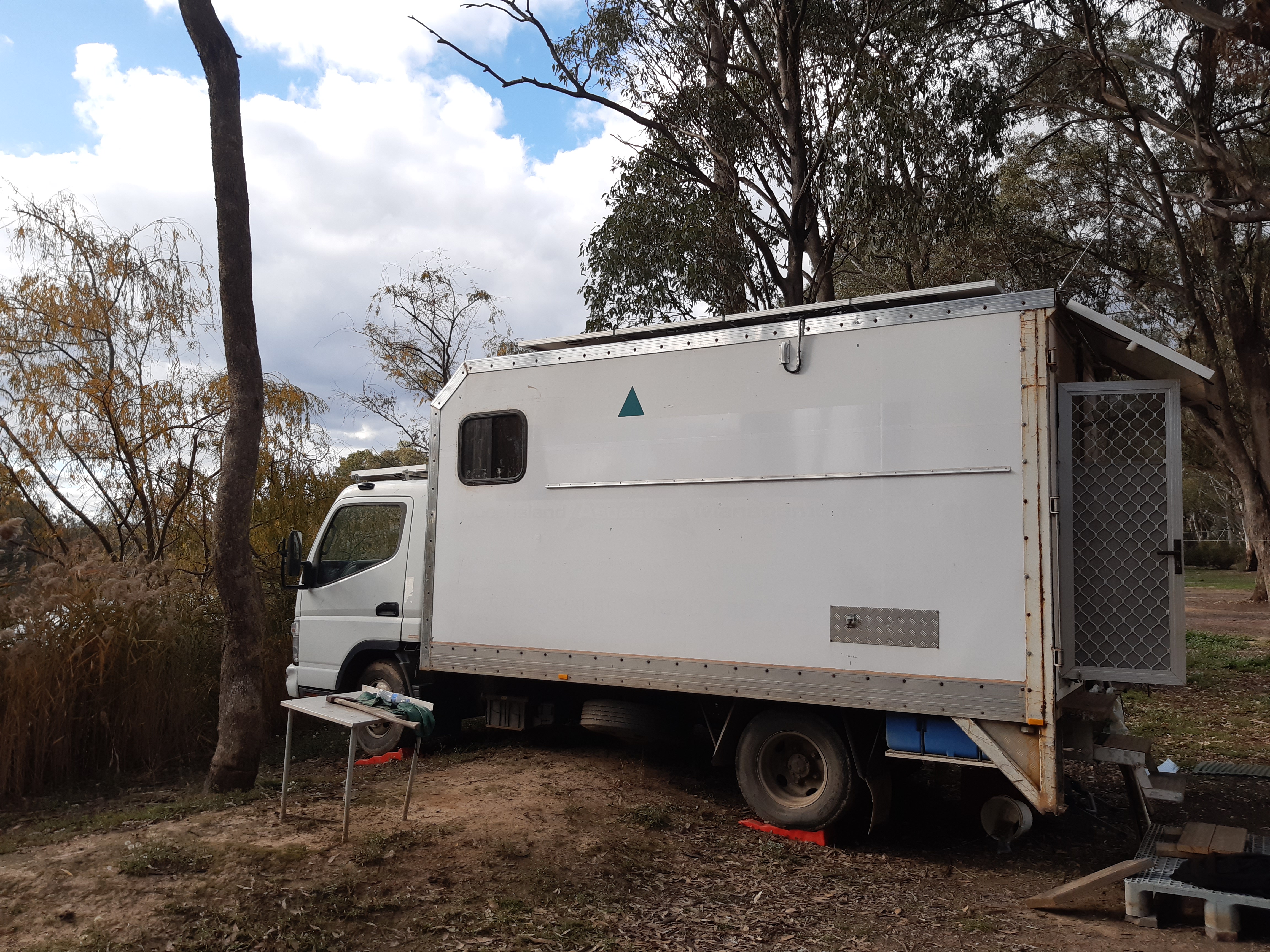Hello,
I’m preparing a new installation, and I have a few things I need to validate. I’ve spend numerous hours studying many sources, but I can’t find a definite answer. I also lack the required experience, which I hope you might have.
- Use case: installation which follows me, in a sense that it can be used both @ home and while travelling (camper/expedition-truck).
- Description: The installation would have 4 PV-arrays, which are asymmetric and not always all available.
- Array1: 200Wp on top of truck cabin
- Array 2A 600Wp + Array 2B 1200Wp: foldable stack on the roof of box at the rear of the truck, when folded (driving) only 2A is exposed, when unfolded (stationary) 2B is also exposed
- Array3 2400 WP on top of my house which is only plugged in when the truck is home.
- To validate 1: an installation with asymmetric & variable PV arrays can work well
- To validate 2: to work well, each array needs its own MPPT to make the best of it, if & when it is available
- To validate 3: multiple/different MPPT's will only work well in a controlled way when they can be synchronized (e.g. charge cycles), which means having plenty of VE.direct ports (when using right size/smaller/cheaper MPPT’s). Octo GX is the most cost-efficient solution which can handle it.
- Question: A 100/20 48V MPPT (array 1 & 2 A) gets in trouble with Max PV voltage at -5°C and below, also with PV panels with rather low voltage. Is this a theoretical problem or a real problem? For example: @ -15°C for the panel to get at max V, the sun is warming it up to 5°C and the problem disappears. Or is the only safe options: A: to move to a 150/35, accepting it will be overkill 95% of the time, B:to disconnect it when it's freezing.
Obviously there are many more components in the system, but I focused on the part where my questions are, not to take more time than necessary from you.
Many thanks for your advice & opinions
Nicolas
PS: Added 2 simple schematics to try to clarify
Update 4/9/20: I was in touch with a Victron Partner in Belgium which has build similar and bigger things before. He validated/confirmed all assumptions. Hope this can help somebody else too. Success with your projects!




